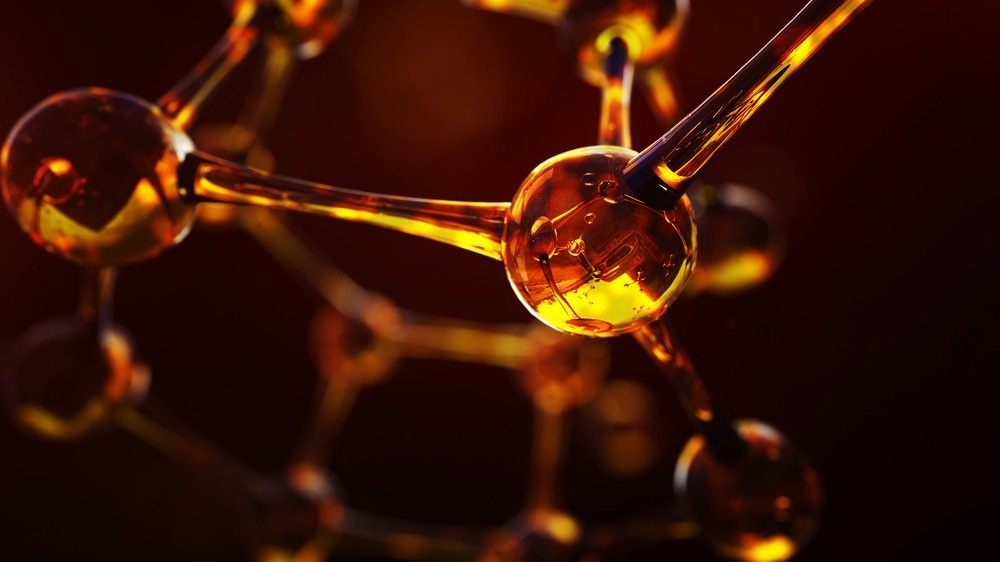Although a shift from polymer- to small molecule-based precursors is highly desirable for the rapid and controlled preparation of porous carbons, the small molecule’s high volatility and lack of efficient methods restrain this shift.

Study: Building the Bridge of Small Organic Molecules to Porous carbons via Ionic Solid Principle. Image Credit: 3d_illustrator/Shutterstock.com
A study published in Nano Research presented a straightforward method for porous carbon preparation, utilizing small organic molecules as precursors. Here, the small organic molecules were converted initially into organic molecular salts with negligible volatility, owing to robust electrostatic forces, and facilitated the formation of porous carbon via subsequent high-temperature pyrolysis.
The pyrolysis of metal moieties entrapped in organic molecular salts evolved into activators or in situ templates, creating nanopores in carbonaceous materials. Sulfur-doped carbon synthesized via an ionic solid strategy served as an efficient support to synthesize small-sized intermetallic platinum-cobalt (PtCo) catalysts, whose high mass activity was applicable to catalyze the reduction of oxygen in fuel cells.
Polymer Precursors for Carbon Synthesis
Nanostructured carbons with suitable porosities and doped heteroatoms have been extensively used in gas separation/storage, water treatment, energy storage/conversion, and heterogeneous catalysis.
Nanostructured carbons are traditionally obtained from natural and synthetic polymers via pyrolysis because of the negligible volatility of the polymer-based precursors. However, achieving the desired porosity and heteroatom doping in carbon using natural polymers is challenging because of their poor solubility and compositional complexity.
On the other hand, although synthetic polymers are better alternatives to their natural counterparts, they involve high-cost synthesis. Therefore, small organic molecules have been proposed to overcome these limitations of polymers. Referring to this alternative approach, one of the authors of the present work, Liang, mentioned in a press release that “The direct purpose of using small molecules as precursors is to simplify carbon preparation by avoiding polymerization”.
However, most small organic molecules are highly volatile, making them unsuitable for pyrolysis to obtain carbon. Despite persistent efforts by previous researchers to overcome this challenge, no convenient strategy has been proposed, and most of the reported strategies involve harsh reaction conditions. Although the use of ionic liquids by the Dai, Antonietti, and Watanabe groups could help obtain carbon via direct carbonization, the ionic liquids used in this study were expensive.
In addition, transition metals have recently been shown to increase the thermal stability of small organic molecules during pyrolysis. However, this process consumes large amounts of transition metals.
Small Organic Molecules as Precursors for Porous Carbons
In the present study, an easy and controllable protocol was proposed to prepare porous carbons from small organic molecules via their initial transformation into organic metal salts, followed by the subsequent carbonization of organic metal salts into carbon with the desired porosity.
Chemically, organic metal salts are comparable to ionic liquids concerning their ionic structure, which provides strong electrostatic forces that help prevent the thermal volatilization of the molecular component. However, in contrast to ionic liquids, organic metal salts are hybrid molecules with organic and inorganic components that enable their direct conversion into porous carbons.
During carbonization, the metal species in organic metal salts evolve into nanostructured templates or activation agents and facilitate the formation of nanopores. Hence, this method is sufficiently versatile to be applied to a wide range of small organic molecules with acidic groups, which are prerequisites for salt formation.
Unlike previous methods using ionic liquids that yielded only N-doped carbons, the broad applicability of the present method can help prepare carbons with diverse chemical functionalities. In this regard, Liang mentioned,
"More importantly, this concept of using small molecules can greatly expand the structural diversity of precursors for carbon preparation and thus could pave a pathway to study the relationship between carbon material properties and precursor structures."
Thus, the present study is an extension of a previously reported strategy that uses ionic liquids to overcome the limitations of using small organic molecules for carbon synthesis. Additionally, the structural components of organic metal salts, including acidic groups, molecular backbones, and metal moieties, influence the chemical doping and porosity of the resulting carbon.
Conclusion
Overall, the research team established a simple, controlled, and adaptable approach for producing porous carbons from small organic molecules. This technique involved the transformation of small organic molecules into organic metal salts that helped resolve the conflict between the high volatility of small organic molecules and the need for high-temperature carbonization.
The ability of organic metal salts to form carbon stems from the strong electrostatic force that holds the molecular units together, allowing organic metal salts with high enthalpies of vaporization or sublimation to participate in the carbonization process. Using the integrated metal species in organic metal salts, extremely porous textures in the final carbons can be easily generated via in situ activation effects.
The adaptability of this technology and the modular character of organic metal salts control the porosity and chemical doping of carbons, which may hold promise for tailor-made porous carbon production at the molecular level.
Reference
Tong, L et al. (2022). Building the Bridge of Small Organic Molecules to Porous carbons via Ionic Solid Principle. Nano Research. https://doi.org/10.1007/s12274-022-4997-8
Disclaimer: The views expressed here are those of the author expressed in their private capacity and do not necessarily represent the views of AZoM.com Limited T/A AZoNetwork the owner and operator of this website. This disclaimer forms part of the Terms and conditions of use of this website.